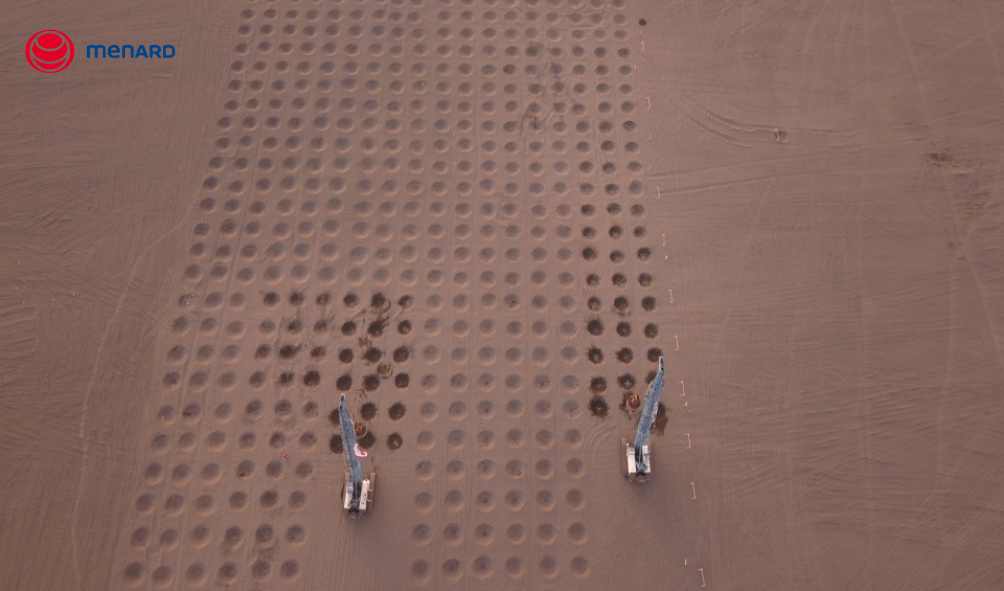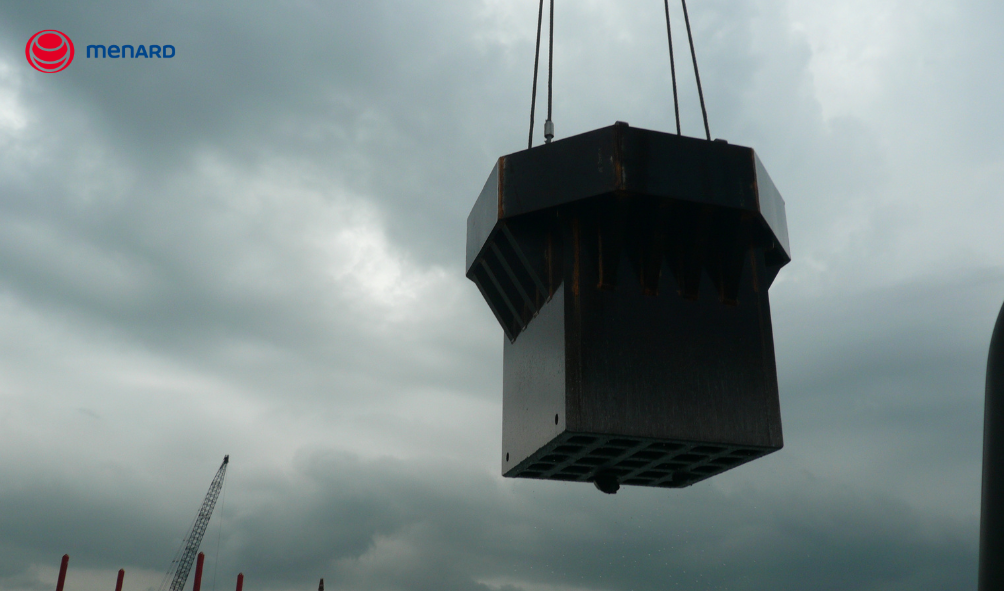The Dynamic Compaction technology, also known as dynamic consolidation, is a technology invented and developed by Menard. This technology was extensively tested and optimised hence its safe and economic application today.
The basic principle behind the Dynamic Compaction (DC) technique consists in the transmission of high energy waves in order to improve weak subsoil. As a result of the impact the soil is compacted depending on its condition, structure and depth. The energy is transferred to the subsoil by multiple impacts with properly shaped weight (normally steel pounder) with a weight ranging from 10 to 40 tons free falling from a height ranging from 5 to 40 m.
In order to perform an effective dynamic consolidation, the lattice – boom cranes are used obtaining sufficiently high impact energy.
The Dynamic Compaction method consists of two pounding stages where in the first stage deep layers are compacted and in the second stage intermediate layers. After completion of the two stages the surface compaction (so-called ‘ironing’) is carried out within the entire improved area.
The Dynamic Compaction is normally preceded by the development of a test plot where the grid spacing is determined along with the impact energy which is needed to achieve the required compaction, i.e. weight and shape of the pounder and the height of its drop.









